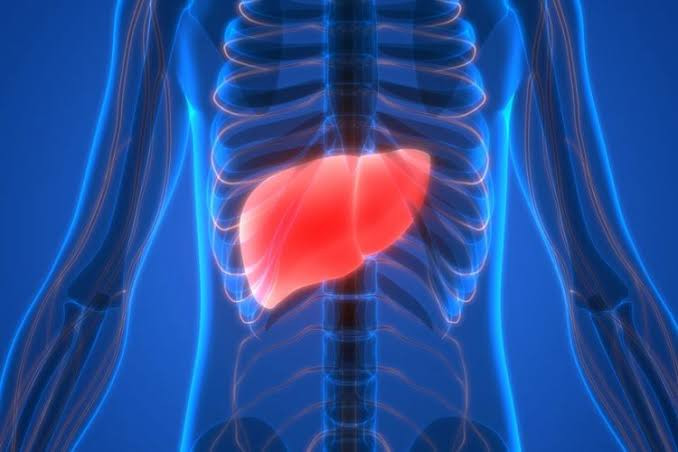Definisi
Asites adalah penumpukan cairan di dalam rongga antara selaput yang melapisi dinding perut dan organ dalam tubuh. Rongga ini disebut rongga peritoneal. Penumpukan cairan di rongga peritoneal akan menyebabkan perut membesar. Asites paling sering disebabkan oleh penyakit hati dan kurangnya protein jenis albumin. Albumin adalah salah satu jenis protein yang berfungsi untuk mengikat cairan. Saat tubuh mengalami kondisi kekurangan albumin (hipoalbuminemia), maka cairan yang ada di dalam sel akan bocor ke jaringan sekitar. Penumpukan cairan tersebut akan menyebabkan munculnya beragam gejala, termasuk nyeri perut, kembung dan perut membesar.
Penyebab
Organ yang ada di dalam rongga perut terbungkus oleh selaput yang disebut peritoneum. Pada wanita, rongga peritoneum bisa berisi sekitar 20 ml cairan, tergantung pada siklus menstruasi yang dimilikinya. Asites terjadi saat jumlah cairan yang ada di dalam rongga peritoneum ini melebihi 25 ml. Kondisi ini sering disebabkan oleh penyakit hati atau penurunan jumlah dan produksi protein albumin.
Dibawah ini adalah beberapa penyakit yang bisa memicu timbulnya asites yaitu:
- Penyakit hati. Penyakit hati dapat menyebabkan terjadinya peningkatan tekanan pembuluh darah hati yang selanjutnya meningkatkan risiko keluarnya cairan dari pembuluh darah ke jaringan sekitar
- Gagal hati (sirosis). Sirosis adalah munculnya jaringan parut di hati yang menyebabkan penurunan fungsi hati. Gagal hati akut sering diakibatkan efek samping obat atau penyalahgunaan NAPZA yang dapat mencederai sel hati
- Budd-chiari syndrome. Sindrom ini disebabkan oleh sumbatan pada pembuluh vena hati, sehingga terjadi peningkatan tekanan darah di hati (hipertensi portal)
- Kanker hati. Kanker dapat membuat peritoneum berlubang atau meingkatkan tekanan pada organ hati sehingga cairan masuk ke rongga peritoneal
- Sindrom nefrotik. Kondisi ini terjadi ketika ginjal mengalami kerusakan, sehingga protein yang harusnya tetap ada di tubuh bisa ikut keluar melalui urine. Kurangnya jumlah protein kemudian memicu turunnya tekanan yang selanjutnya memicu bocornya cairan
- Gagal Jantung. Kondisi ini juga dapat menyebabkan asites karena kondisi ketidakmampuan otot jantung untuk memompa cairan dan darah ke seluruh tubuh
- Gangguan Pankreas. Gangguan ini meningkatkan risiko terjadinya asites karena peradangan pankreas dapat menyebabkan malnutrisi sehingga menimbulkan kurangnya protein. Selanjutnya kondisi ini menyebabkan kebocoran cairan ke jaringan sekitar
- Penyakit pada indung telur (ovarium). Penyakit pada organ ini juga dapat membuat iritasi pada peritoneum yang menyebabkan kebocoran cairan ke rongga peritoneal
- Kurangnya protein albumin. Albumin adalah salah satu jenis protein yang berfungsi untuk mengikat cairan
Faktor Risiko
Sebagian besar kasus asites disebabkan karena penyakit hati. Sehingga beberapa hal yang dapat meningkatkan risiko timbulnya asites akibat penyakit hati, meliputi:
- Konsumsi alkohol jangka panjang
- Mengidap penyakit kuning atau peradangan hati jangka panjang (kronik)
- Menggunakan obat-obatan melalui jarum suntik
- Riwayat berganti-ganti pasangan
- Riwayat memiliki tato
- Melakukan transfusi darah
- Melakukan hubungan homoseksual atau heteroseksual
- Obesitas
- Memiliki kadar kolesterol dalam darah yang tinggi (hiperkolesterolemia)
- Diabetes mellitus
- Kanker
Gejala
Penumpukan cairan pada rongga perut dapat menyebabkan gejala berupa:
- Perut terasa sesak dan tidak nyaman
- Perut membengkak karena tekanan pada orang lain
- Kenaikan berat badan dalam waktu singkat
- Nyeri ulu hati
- Sesak napas yang memberat saat berbaring, Penumpukan cairan di dada terjadi ketika cairan mengalir ke samping rongga paru-paru
- Nafsu makan menurun
- Mual dan muntah
- Infeksi yang menimbulkan gejala demam.
- Penonjolan organ dalam perut pada pusar (umbilikalis) atau lipat paha (inguinalis) akibat tekanan pada perut karena penumpukan cairan
Diagnosis
Untuk menegakkan diagnosis asites diperlukan wawancara mendalam (anamnesis) mengenai:
- Gejala yang dialami
- Riwayat penyakit lain yang dicurigai menjadi pemicunya
- Riwayat seksual
- Riwayat vaksinasi
Diagnosis ini dapat dipastikan melalui pemeriksaan fisik dan pemeriksaan penunjang. Pemeriksaan fisik dilakukan dengan memantau kondisi tubuh. Bila cairan yang menumpuk di perut jumlahnya >500 cc, asites dapat dengan mudah dideteksi melalui pemeriksaan fisik. Akan tetapi bila cairan jumlahnya sedikit, beberapa pemeriksaan yang mungkin diperlukan adalah:
- Ultrasonografi (USG). untuk memastikan adanya asites
- CT scan. Pemeriksaan ini diperlukan pada kasus dengan kecurigaan penyakit lain yang mendasarinya, seperti contohnya tumor di rongga perut
- Tindakan Parasentesis. Tindakan ini melibatkan pengambilan cairan rongga perut untuk kemudian dianalisis di bawah mikroskop. Pengambilan cairan dilakukan menggunakan jarum setelah dilakukan pembiusan lokal terlebih dahulu
- Pemeriksaan darah. Pemeriksaan ini juga perlu dilakukan untuk mengevaluasi kondisi umum penderita, karena penderita asites umumnya memiliki gangguan pembekuan darah karena adanya gangguan hati
Tata Laksana
Asites dapat ditatalaksana dengan menggunakan:
- Diuretik. Obat ini bekerja membuang garam dan air dari dalam tubuh. Dengan dibuangnya air yang berlebihan, keluhan asites diharapkan dapat berkurang
- Tindakan Parasentesis. Tindakan ini dilakukan dengan menyedot kelebihan cairan dari dalam perut menggunakan jarum Panjang. Metode ini umumnya dilakukan pada kasus asites berulang yang tidak memberi respon baik dengan obat diuretik
- Operasi. Pada kasus berat, operasi dapat dilakukan untuk menangani asites. Sebuah selang akan dipasang di dalam tubuh guna memperlancar aliran darah pada organ hati
Komplikasi
Beberapa komplikasi yang dapat muncul apabila asites tidak segera ditangani, meliputi:
- Infeksi pada selaput rongga perut (peritonitis)
- Gagal ginjal akibat kerusakan hati yang parah (sindrom hepatorenal)
- Kekurangan nutrisi, khususnya protein yang dapat berakibat penurunan berat badan akibat sulit makan dan minum
- Kesulitan bernapas akibat cairan yang menekan otot diafragma dan penumpukan cairan disekitar paru (efusi pleura)
- Penurunan kesadaran akibat gangguan metabolisme hati (ensefalopati hepatic)
- Penonjolan organ dalam (hernia) yang dapat terjadi di pusar (umbilikalis) atau di selangkangan (inguinalis)
Pencegahan
Pencegahan yang bisa dilakukan adalah mencegah terjadinya penyakit yang mendasari asites. Beberapa saran pencegahan yang dapat dilakukan meliputi:
- Perubahan gaya hidup sehat seperti tidak minum alkohol, menjaga berat badan ideal dan berolahraga secara teratur
- Vaksin penyakit yang dapat menyebabkan asites seperti hepatitis B dan HPV
- Mengurangi konsumsi garam
- Minum air putih yang cukup
- Tidak berganti-ganti pasangan seksual
- Menggunakan kondom untuk mencegah infeksi menular seksual
- Menggunakan obat-obatan sesuai instruksi dokter
Kapan Harus ke Dokter?
Disarankan untuk segera melakukan pemeriksaan ke dokter jika mengalami gejala demam, tinja berdarah atau berwarna hitam, muntah darah, kulit mudah memar atau berdarah, penurunan kesadaran, mata menjadi kuning atau kecurigaan mengalami asites. Hal ini dikarenakan asites merupakan gejala dari penyakit atau kondisi lain. Deteksi dini penyebab asites dapat membantu dokter untuk mengobati penyakit yang mendasari sebelum bertambah parah.
Mau tahu informasi seputar penyakit lainnya? Cek di sini, ya!
- dr Ayu Munawaroh, MKK
Wedro, B. Emedicine Health (2019). Ascites Definition, Symptoms, Causes, Treatment, and Prognosis.
Wint, C. & Boskey, E. Healthline (2019). Ascites Causes and Risk Factors.
Web MD (2018). What Are Ascites and Paracentesis?
Phillips, M.M. National Institute of Health (2018). Medline Plus. Ascites.












